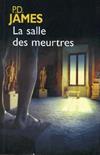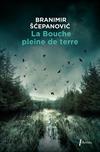
Icehenge
by Kim Stanley Robinson | Science Fiction & Fantasy |
ISBN: 0312866097 Global Overview for this book
ISBN: 0312866097 Global Overview for this book
2 journalers for this copy...
will read/let go
I promised this book to another bookcrosser already, and I'm sort of sorry I did after reading it now. I'm buying another copy for my SF library collection to keep, though. I know that I'm going to want to reread this one.
This book got a number of negative reviews, basically because people failed to see the connection between the three parts. DUH!!! Read it again!!! I had no problem whatsoever with it. you will be pleasantly surprised. Another major criticism of this book is that in the end, the mystery is not cleared up for the reader. But I think that that's okay. There are plenty of things in our own environment that have no answers. I absolutely loved this story and would recommend it to anyone who likes science fiction.
The story is told in three parts. The first part of the novel begins with the story of Emma Weil in the year 2248. Emma was in charge of biologic life support about a spaceship miner called Rust Eagle, upon which there was a mutiny. A group headed by a man called Davydov, which called itself the MSA (Mars Starship Association), took over two of three ships for their own purposes (I'll let you read what those are) and anyone on the Rust Eagle who wanted to were free to join them on their mission. It was a move against the ruling entity on Mars, The Committee, which had originally started out as a kind of advisory board on the Earth and on Mars, then became intertwined with government & began to rule along the lines of totalitarian government. Emma was asked to go, but did not, but she does give the crew of Davydov's expedition her assistance. She decided to go back to Mars on the Rust Eagle to take her chances before the Committee once she got there. The rest of part one is Emma's story, and I won't repeat it here.
Part Two is the story of Hjalmar Nederland who goes in search of the truth of Mars history. As his story begins, he and some of his students have just received permission to excavate New Houston, a once-domed city that was destroyed in the "unrest" between The Committee and a rebel alliance back in the time of Emma Weil. Nederland's story is set roughly 300 years later; on Mars, people live a long time due to artificial means given to them as infants. The site of the old city of New Houston has been on the Committee's proscribed list of sites -- and because of a connection that Nederland has,he has just received permission to excavate it. As the dig uncovers the city, Nederland has a flashback from when he was a child, and realizes that he has to disprove the official historical viewpoint of the Committee -- that there was no widespread organization of rebels who were able to take control of Mars back in the 23rd century. A second startling discovery takes place: the group discovers an old fieldcar with boxes of documents on the back seat... including the journal of Emma Weil, which starts Nederland on his life's work of proving the state wrong. But wait! There's more! While Nederland is investigating the facts as presented in Emma's diary, a strange stonehenge-like formation made of ice is discovered on Pluto...with Sanskrit inscription. Now Nederland tries to prove that even this is connected with his work. What is so interesting, though, about book II, is not just Nederland's work or that story, but it is a commentary on life under a totalitarian system...how history is constantly being revised and the revisions are getting revisions, and how a group like The Committee has the power to engrain their own propaganda & truths in society so deeply that when someone finds out the truth, most of the rest of society thinks that person is crazy or a troublemaker. Nederland is so focused on exposing the truth, but to do so, he realizes he still has to play by the rules imposed by the Committee to get ahead.
Part 3, the end of the book, jumps ahead in time to the story of Edmund Doya, who is actually Nederland's great grandson, told from Edmond's perspective in 2610. Edmund grew up just totally absorbed with Icehenge...read all of his great-grandfather's works, absorbed all he could about it and wrote a book on it by age 14. But due to a chance encounter when he is a bit older and living on his own, he comes to the realization that Nederland's theories about Icehenge cannot possibly be true...that there must be another explanation. So he goes off in search of one.
I like to play detective and my theory matched the one given at the end. So that's the one I'm going to stick with. I won't say what that was, of course, but it seemed to make the most sense & I formed it long before they got to that point.
I would definitely recommend this one...a great story, a good mystery at its core and absolutely fantastic writing. The characters were real & alive for me (especially Nederland -- who at times I felt sorry for and at times thought he was too self absorbed and didn't like him!) making for a wonderful book.
This book got a number of negative reviews, basically because people failed to see the connection between the three parts. DUH!!! Read it again!!! I had no problem whatsoever with it. you will be pleasantly surprised. Another major criticism of this book is that in the end, the mystery is not cleared up for the reader. But I think that that's okay. There are plenty of things in our own environment that have no answers. I absolutely loved this story and would recommend it to anyone who likes science fiction.
The story is told in three parts. The first part of the novel begins with the story of Emma Weil in the year 2248. Emma was in charge of biologic life support about a spaceship miner called Rust Eagle, upon which there was a mutiny. A group headed by a man called Davydov, which called itself the MSA (Mars Starship Association), took over two of three ships for their own purposes (I'll let you read what those are) and anyone on the Rust Eagle who wanted to were free to join them on their mission. It was a move against the ruling entity on Mars, The Committee, which had originally started out as a kind of advisory board on the Earth and on Mars, then became intertwined with government & began to rule along the lines of totalitarian government. Emma was asked to go, but did not, but she does give the crew of Davydov's expedition her assistance. She decided to go back to Mars on the Rust Eagle to take her chances before the Committee once she got there. The rest of part one is Emma's story, and I won't repeat it here.
Part Two is the story of Hjalmar Nederland who goes in search of the truth of Mars history. As his story begins, he and some of his students have just received permission to excavate New Houston, a once-domed city that was destroyed in the "unrest" between The Committee and a rebel alliance back in the time of Emma Weil. Nederland's story is set roughly 300 years later; on Mars, people live a long time due to artificial means given to them as infants. The site of the old city of New Houston has been on the Committee's proscribed list of sites -- and because of a connection that Nederland has,he has just received permission to excavate it. As the dig uncovers the city, Nederland has a flashback from when he was a child, and realizes that he has to disprove the official historical viewpoint of the Committee -- that there was no widespread organization of rebels who were able to take control of Mars back in the 23rd century. A second startling discovery takes place: the group discovers an old fieldcar with boxes of documents on the back seat... including the journal of Emma Weil, which starts Nederland on his life's work of proving the state wrong. But wait! There's more! While Nederland is investigating the facts as presented in Emma's diary, a strange stonehenge-like formation made of ice is discovered on Pluto...with Sanskrit inscription. Now Nederland tries to prove that even this is connected with his work. What is so interesting, though, about book II, is not just Nederland's work or that story, but it is a commentary on life under a totalitarian system...how history is constantly being revised and the revisions are getting revisions, and how a group like The Committee has the power to engrain their own propaganda & truths in society so deeply that when someone finds out the truth, most of the rest of society thinks that person is crazy or a troublemaker. Nederland is so focused on exposing the truth, but to do so, he realizes he still has to play by the rules imposed by the Committee to get ahead.
Part 3, the end of the book, jumps ahead in time to the story of Edmund Doya, who is actually Nederland's great grandson, told from Edmond's perspective in 2610. Edmund grew up just totally absorbed with Icehenge...read all of his great-grandfather's works, absorbed all he could about it and wrote a book on it by age 14. But due to a chance encounter when he is a bit older and living on his own, he comes to the realization that Nederland's theories about Icehenge cannot possibly be true...that there must be another explanation. So he goes off in search of one.
I like to play detective and my theory matched the one given at the end. So that's the one I'm going to stick with. I won't say what that was, of course, but it seemed to make the most sense & I formed it long before they got to that point.
I would definitely recommend this one...a great story, a good mystery at its core and absolutely fantastic writing. The characters were real & alive for me (especially Nederland -- who at times I felt sorry for and at times thought he was too self absorbed and didn't like him!) making for a wonderful book.
off to bachika; enjoy!
Arrived safely today; will release when finished reading.



